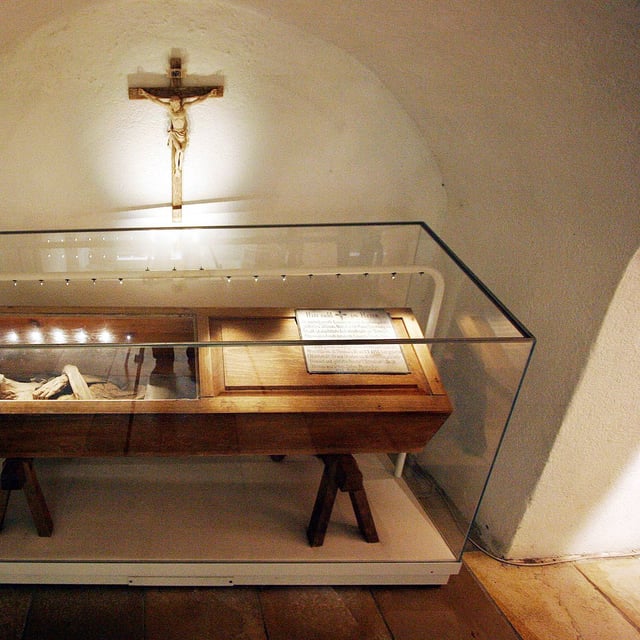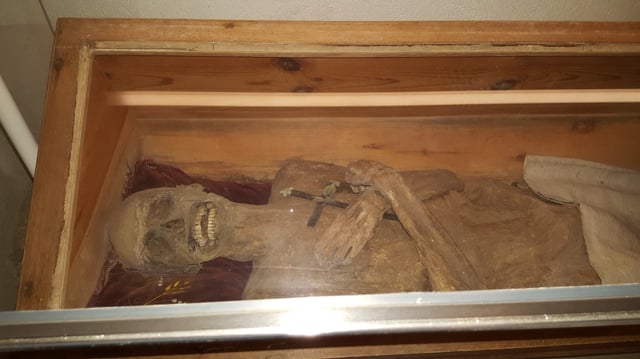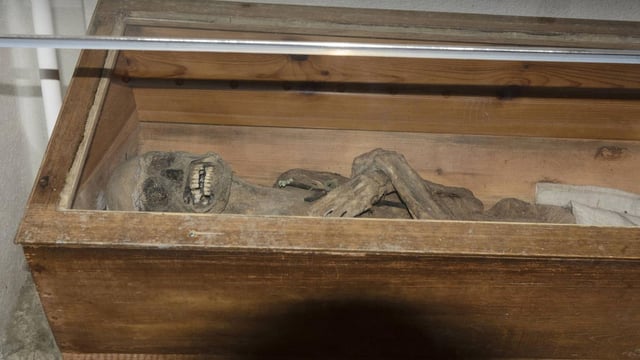Overview
- The mummy, identified as Franz Xaver Sidler, was preserved using an unprecedented method involving internal stuffing with wood shavings, textiles, and zinc chloride via the rectum.
- Radiocarbon dating and anatomical analysis confirmed Sidler’s death in 1746 at age 37, aligning with historical records.
- Scientific examination dispelled myths of poisoning, identifying a glass bead from a rosary and determining tuberculosis-related pulmonary hemorrhage as the likely cause of death.
- Dietary analysis revealed Sidler enjoyed a high-status diet of European grains, animal products, and possibly freshwater fish, reflecting his privileged lifestyle as a priest.
- Following the study, Sidler’s remains were ceremonially reburied in his parish with significant public involvement, emphasizing the community's connection to its heritage.


